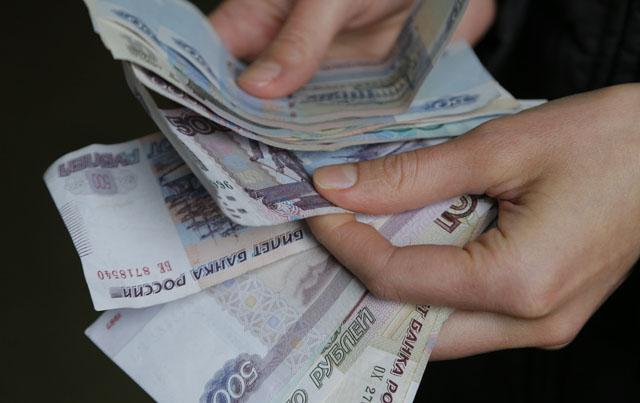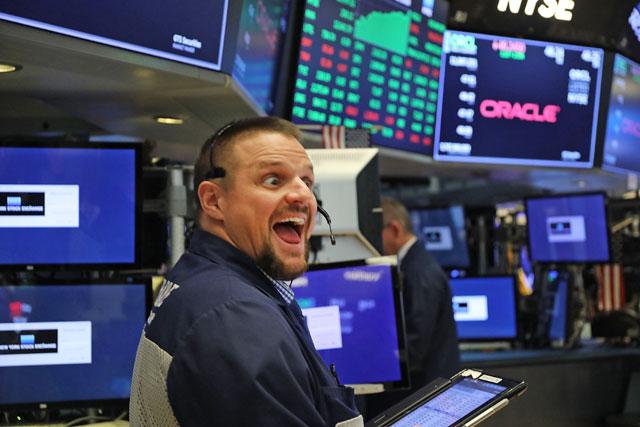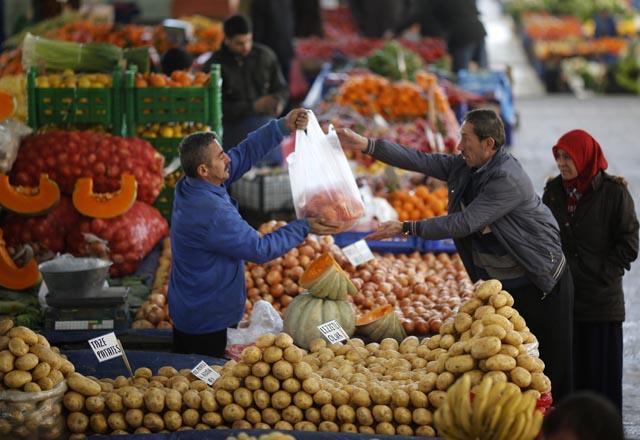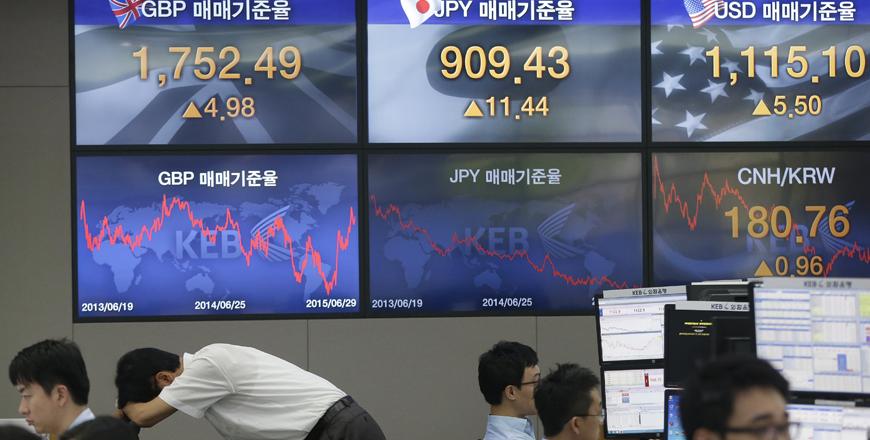You are here
Russian ruble, Turkish lira, S. African rand most vulnerable to another sell-off — poll
Mar 06,2014 - Last updated at Mar 06,2014

LONDON — Turkey’s lira and South Africa’s rand will weaken more this year, caught in the crosshairs of emerging market capital outflows and an ascendant US dollar, according to a Reuters poll that also showed Russia’s ruble losing more ground.
Investors and speculators have sold off emerging market assets since the US Federal Reserve (Fed) made clear late last year that it would gradually taper its massive monthly bond purchase programme, which up until then had been propping them up.
As it became more clear the Fed intended to wind down the programme by year-end, emerging market currencies got hit hard, although there has been a let-up in the selling over the last few weeks.
The Turkish lira, which has lost about a fifth of its value over the past year is expected to get hit by a political scandal that has gripped the government in Ankara.
A graft probe which led to the resignation of three ministers in December 2013 and shook Turkish Prime Minister Recep Tayyip Erdogan’s government unnerved investors further, particularly with elections looming in March and August.
In January, the Turkish central bank raised all of its key interest rates in a dramatic move in an emergency policy meeting to defend a crumbling currency that is among the most vulnerable to another sell-off.
“We remain bearish on the longer term given our outlook on US yields, emerging market growth and the risk that the important election year in Turkey brings a renewed pressure once again later in the year,” Anezka Christovova, foreign exchnage strategist at Credit Suisse said.
The lira, which touched a record low of 2.39 in January and has fallen around 3 per cent so far this year, is expected to trade at 2.25 to the dollar in a month, 2.27 per dollar in three and settle at 2.25 a dollar in a year.
Like the lira, the rand also lost almost a fifth of its value last year due to its sticky current account and domestic labour strife.
It is expected to shed around 3 per cent in the next 12 months to trade at 11.02 against the dollar.
“The key concern for the rand is this current account deficit because even though the currency has been very weak already, the current account has not shown any significant signs of improvement,” said Barclays Africa analyst Mike Keenan.
South Africa’s current account deficit widened in the third quarter to a five-year high, increasing the economy’s vulnerability to external shocks, while trade figures for January reported last week point to a further deterioration.
“We think the rand will start to weaken soon because we have had a bit of profit taking by the rand bears, but the positioning is now well set for a renewed bout of weakness,” he added.
The Russian ruble, which has fallen nearly 10 per cent this year and hit a record low on Monday, will also fall a bit more, but not very much, so far shrugging off the biggest escalation in tensions between Russia and the West since the Cold War.
But all three currencies remained top picks by global currency strategists as most vulnerable to another emerging market sell-off.
Strategists in a poll taken over the last 48 hours predict the ruble will recover a little to 35.50 against the dollar in a month, 35.00 in three months before weakening to 36.17 in a year’s time.
But when asked how low it could trade in the near term, the consensus from nine strategists put it at 37 to a dollar.
“If you look at the ruble forecast, a lot of it is dollar strength. It’s not like I’m predicting isolated ruble panic but I think the ruble is faced with challenges,” said John Hardy, head of foreign exchnage strategy at Saxo Bank.
“The economy is underperforming and I think they [Russia] would like to see the ruble weaker anyway... in terms of making Russia competitive,” he added.
Separately, foreign exchange strategists polled by Reuters expect the dollar to easily outperform other major currencies in the coming year, driven by demand for US assets prompted by a shift in Fed policy.
By signalling its intentions of closing its quantitative easing programme this year, the Fed may raise interest rates in the second half of next year.
Wednesday’s poll of over 60 analysts conducted March 3-5, showed the dollar set to gain against the euro, yen and sterling over the next 12 months.
“Real interest rates in the US are going to rise and that is going to certainly decrease the (capital) flow outside of the US into other economies,” said Geoffrey Yu, a currency strategist at UBS.
“We have seen that trend in emerging markets already and are going to see it in other economies as well,” he added.
The poll showed the euro holding around $1.36 in a month’s time, just shy of Wednesday trading level around $1.37.
It is expected to weaken over the next year — to $1.34 in three months, and $1.28 in 12.
Similarly, the yen was forecast to hold near 102 per US dollar in a month, and then weaken to 104 in three months and 110 in a year.
A fall in the yen to 110 per dollar in a year, as the poll predicts, would take the currency to a low not seen since the depths of the financial crisis in 2008.
Divergence
Analysts also attribute the broad dollar rally to the divergence in monetary policies in developed economies.
While calls for the Fed tightening its policy have increased, expectations are for the Bank of Japan and the European Central Bank (ECB) to maintain an easing bias to support their economies.
Indeed, with eurozone inflation running well below the ECB’s target of just under 2 per cent, the central bank is under pressure to print money, something a separate Reuters poll showed a growing minority predicting.
“They [the ECB] have precious little ammunition left, but at the very least they will try and make as much dovish noise as possible,” said Kit Jukes, head of foreign exchange research at Societe Generale, referring to Thursday’s ECB rates meeting.
Over the past few years leading currency watchers as a group have repeatedly called for the euro to weaken, only to see it rise against the dollar.
However, if the ECB does ease in a substantial way by way of outright quantitative easing like its counterparts in other developed economies, that trend could reverse.
“There can be some justification for the euro strength like a reduction in risk premium and capital flows, but it probably has reached its peak and we expect it to weaken up ahead,” UBS’s Yu said.
The British pound was forecast at $1.66 in one month, and then to weaken to 1.65 in three and 1.62 in a year.
Related Articles
BENGALURU — Emerging market stocks hit one-week highs on Wednesday as a strong start to the US corporate earnings season encouraged investor
Standard & Poor’s (S&P) cut its outlook on Turkey’s ratings to negative from stable on Friday, saying that it saw risks of a hard economic landing and that the country’s policy environment was becoming less predictable.
LONDON — The world's emerging economies are allowing their currencies to slide in a quest to remain competitive, following China's devaluati



















